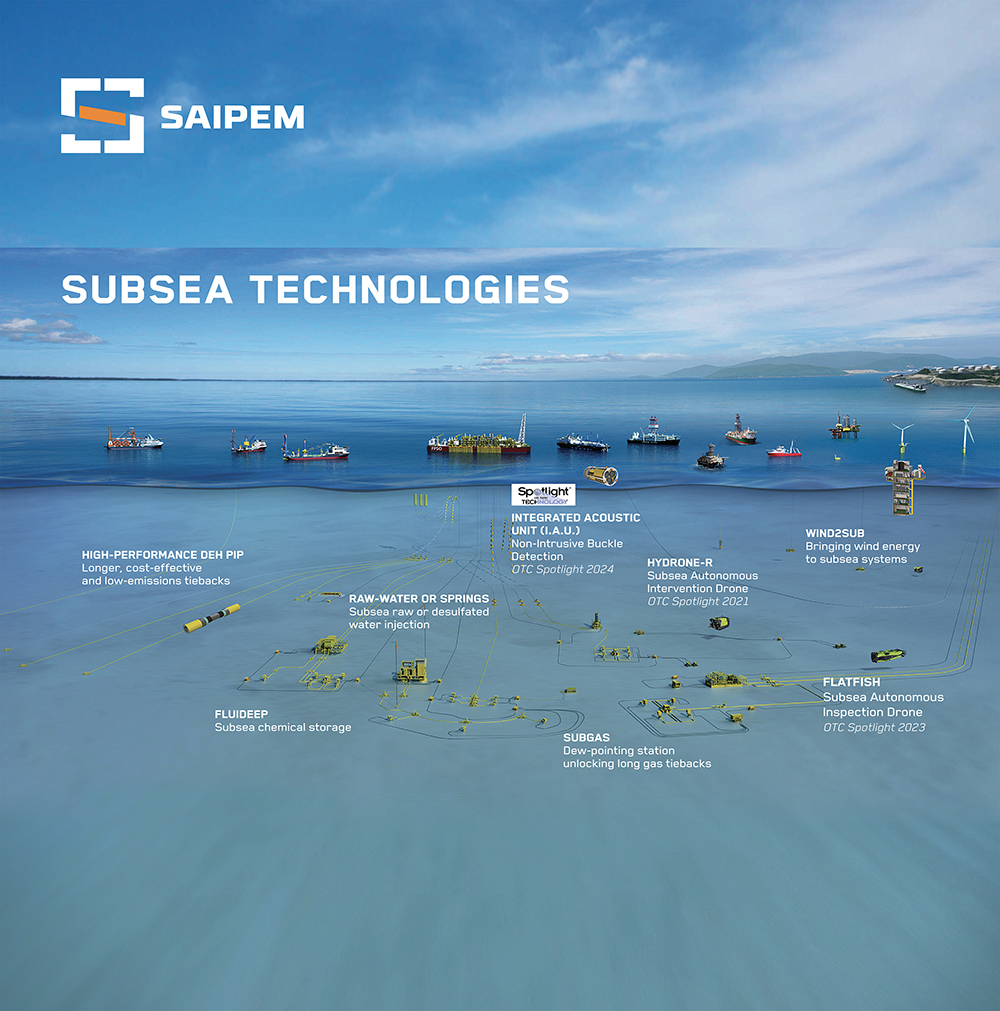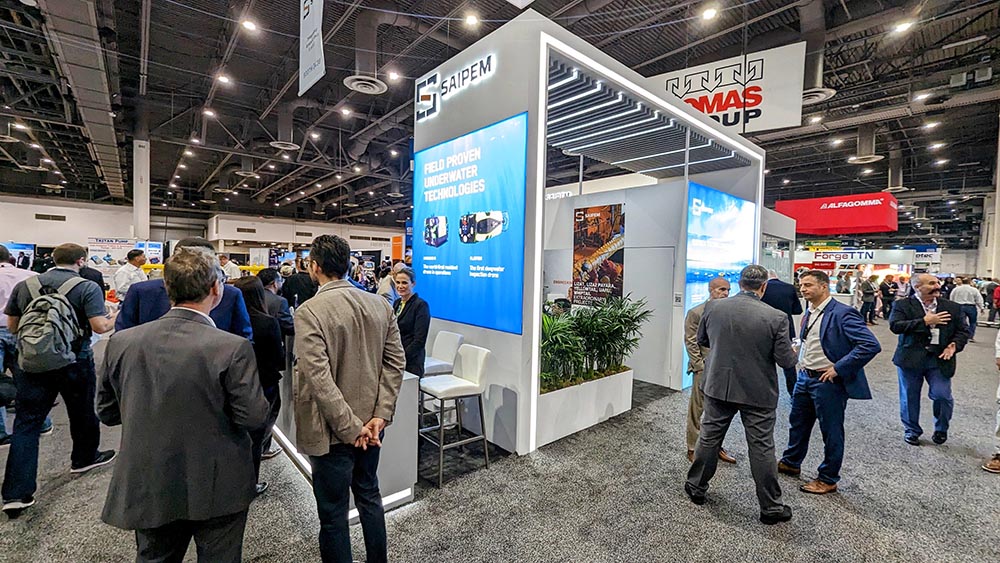Based in Italy and focused on supporting the engineering and construction of major projects for the energy and infrastructure sectors, Saipem showcased their scope and depth of their subsea technologies at the Offshore Technology Conference. The company presented on the program multiple times, but at the booth, attendees wanted to know more about their range of drones, which include three models that each have distinct capabilities.
Created for deepwater inspections albeit perfectly suitable for shallow water tasks as well, the Flatfish can be launched from a fixed, open sea platform or directly from the coast and then placed on the seabed on a resident garage featuring charging and data transfer capabilities. The Hydrone-R Is a mid-range drone, which can combine inspections and interventions thanks to its robotic arms and multi-purpose tools. The Hydrone-W is the largest and most powerful, with capabilities that make it an entirely new class of product as a WROV (Work-Class Remotely Operated Vehicle).
Each of them were discussed in the context of how products like the Flatfish were used by Shell and Petrobras for inspection campaigns of two ultra-deepwater fields offshore Brazil, but that’s just the beginning of the value it’s been able to unlock. The only drone performing vertical automated underwater inspections ever built. It uses A.I. to perform complex tasks like underwater pipeline and riser autonomous inspection, subsea IoT data harvesting and contactless monitoring of cathodic protection systems. The Flatfish can be launched / recovered by a flying-hanging garage or be permanently subsea resident for recharging and data transfer.
Additionally, products like the Integrated Acoustic Unit (I.A.U.) and the Wind2SUB are major parts of Saipem’s offshore technology portfolio, which attendees wanted to better understand. The I.A.U. won a 2024 Spotlight on New Technology Award, as it provides greater accuracy and timeliness in remotely detecting obstructions, pipe deformations, accidental water ingress to eliminate the risks associated with the mechanical detector commonly used during pipelaying.

The I.A.U. is already supporting projects under execution, which is connected to questions of value that were top of mind for attendees. Many wanted to know specifically how most advanced technological tools can make an impact, which is something the Saipem team spoke to in terms of project specifics as well as wider goals.
“Saipem approach to underwater robotics hinges upon a fleet of diversified drones aiming at reducing emissions, costs, risks to assets and personnel while increasing the quality and magnitude of acquired data,” said Francesco Cavallini, Saipem Head of Commercial Sonsub and Subsea Technologies & Services. “We’ve seen how the operational experience for users opens up entirely new efficiencies for them, all of which are directly connected to our core purpose around building a sustainable future."
To learn more about Saipem, click here.



.JPG.small.400x400.jpg)

